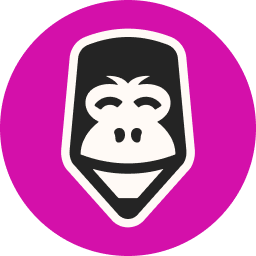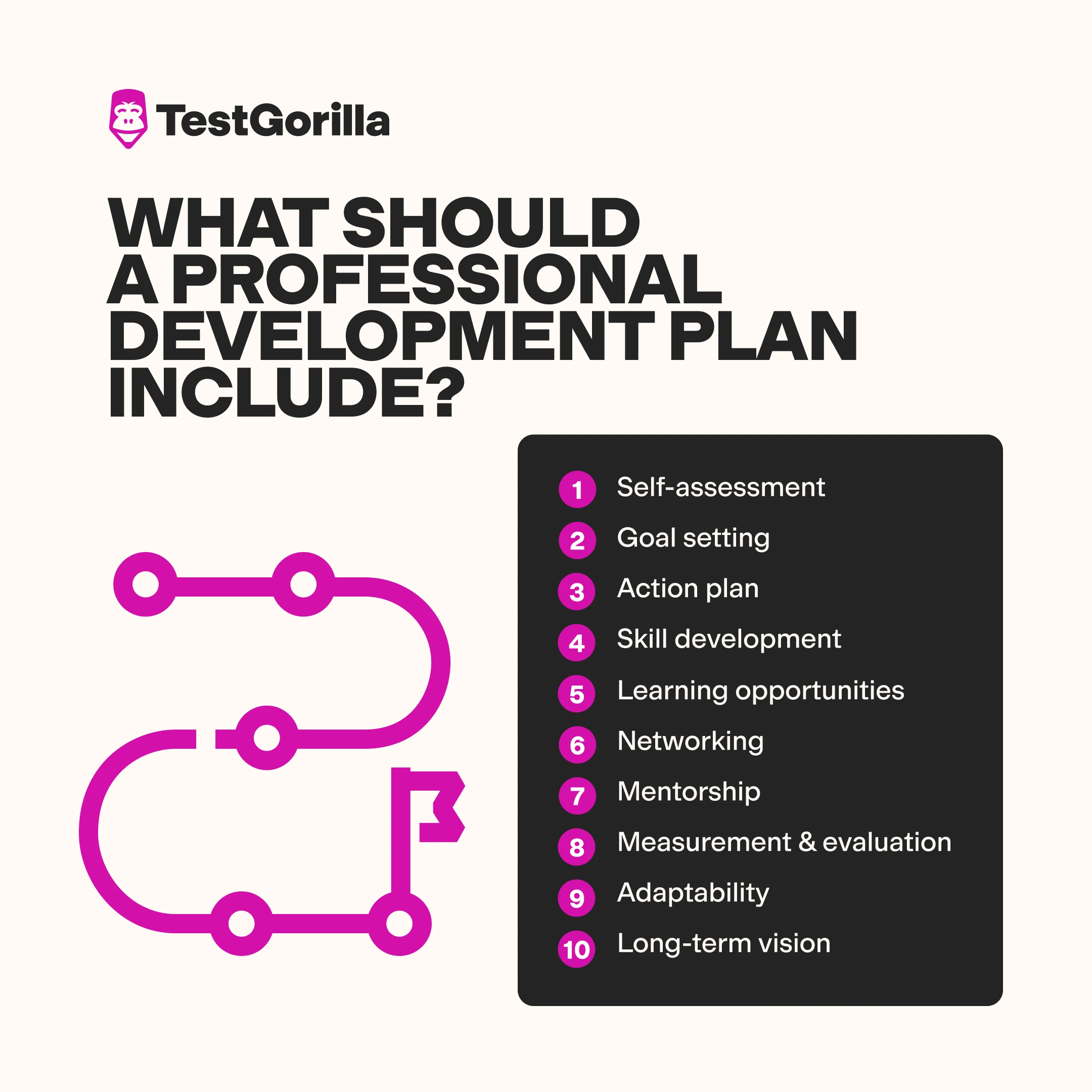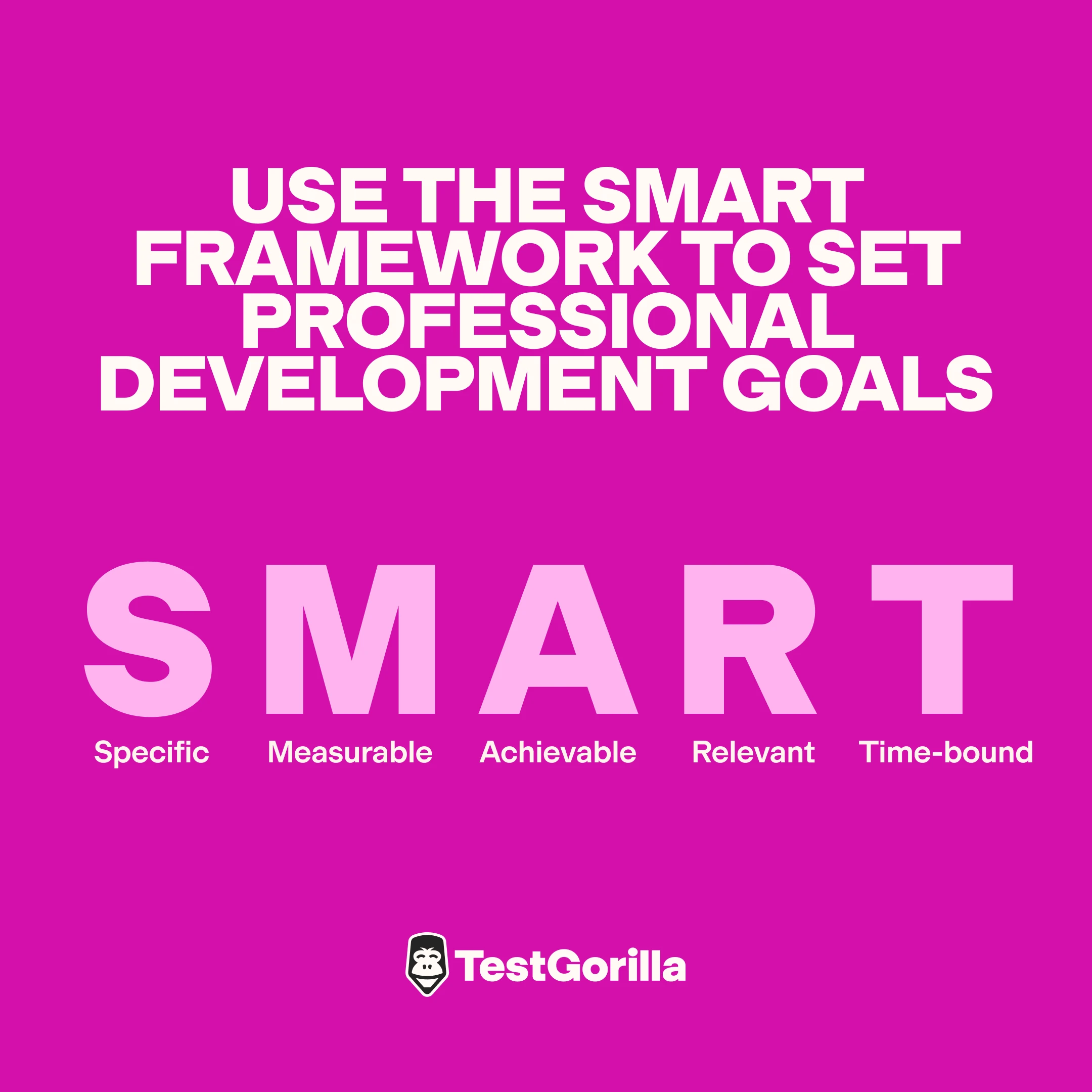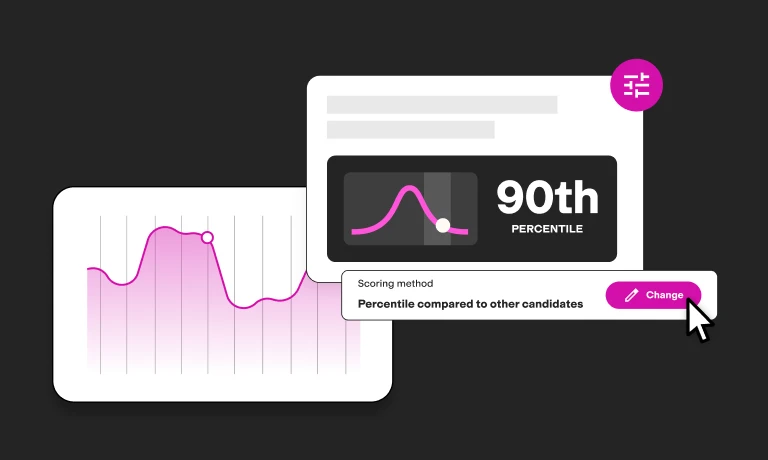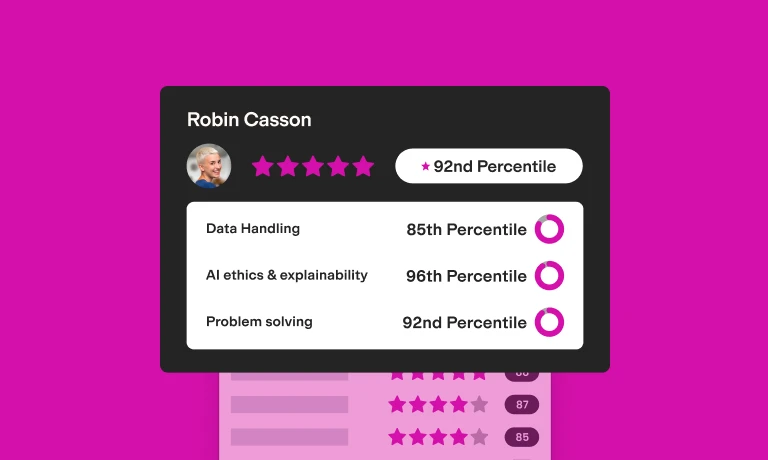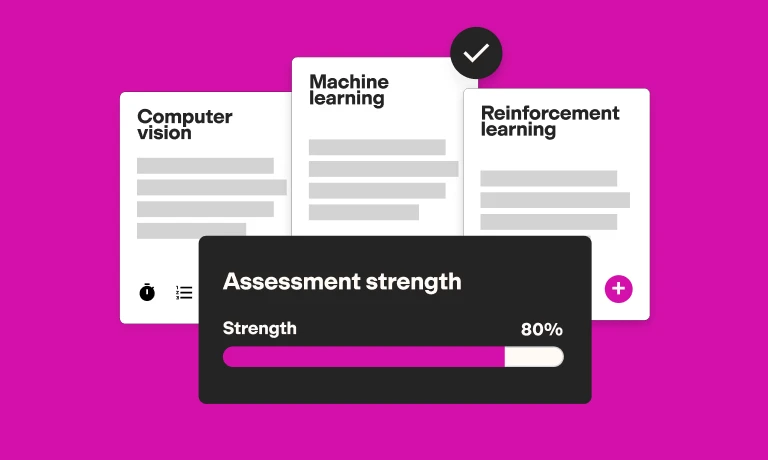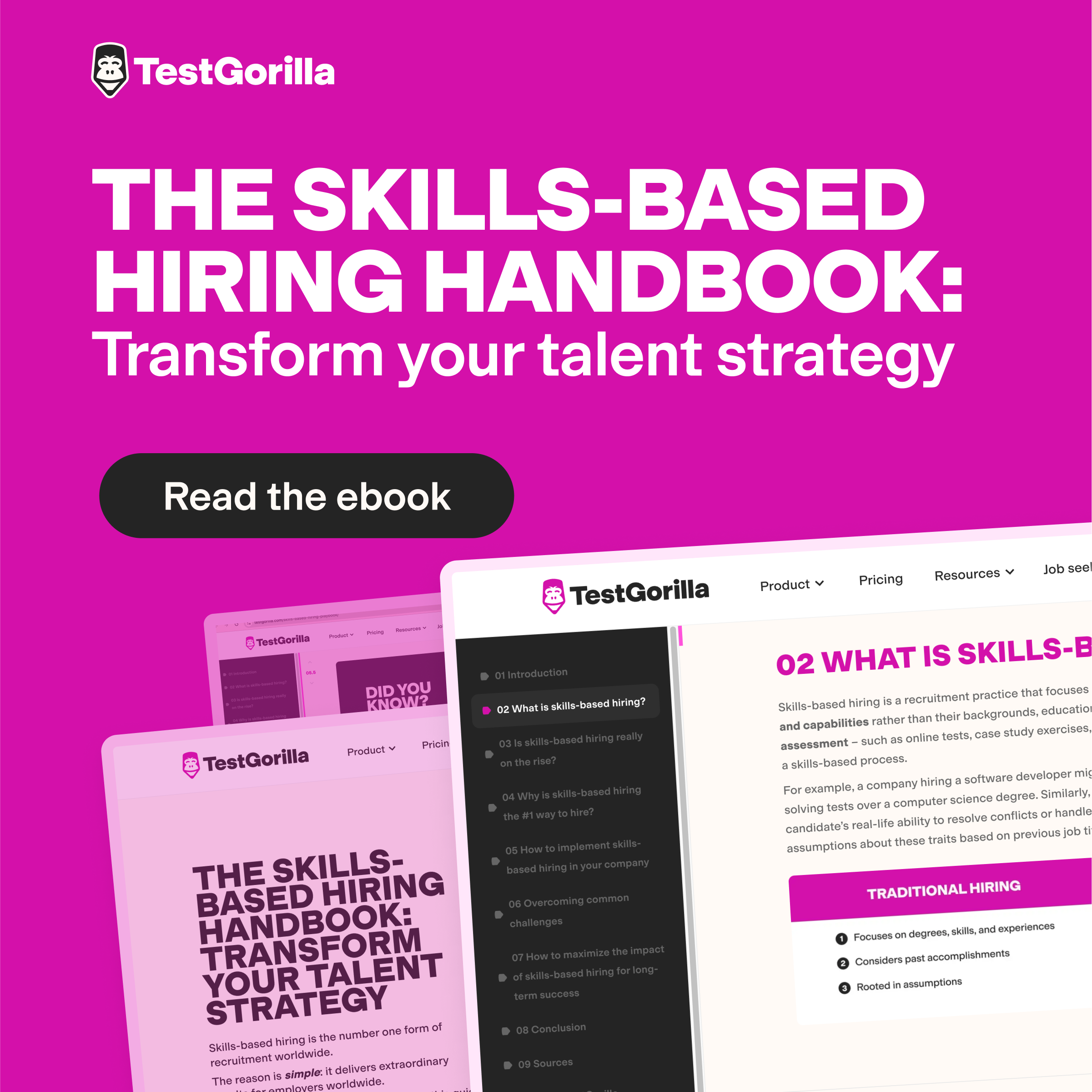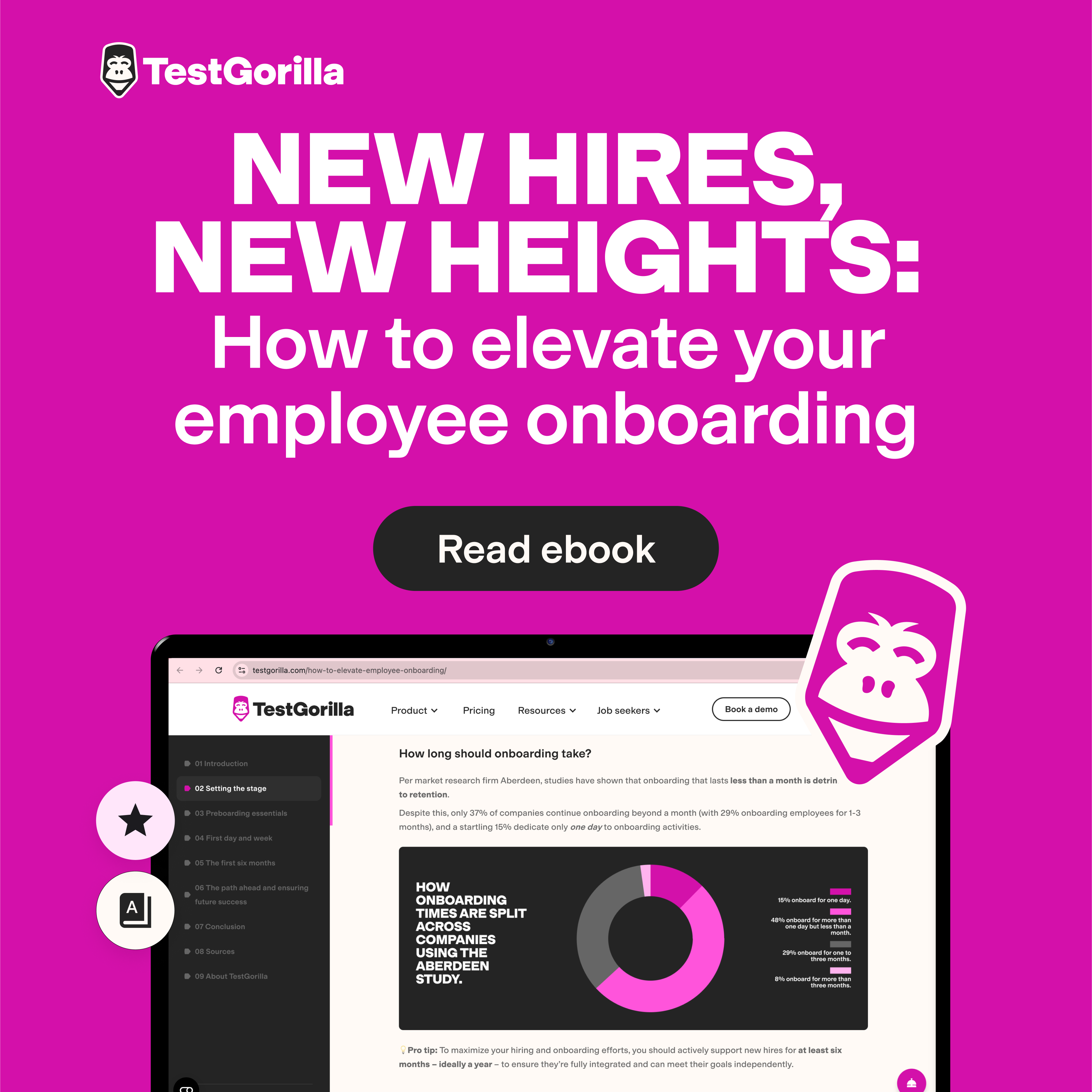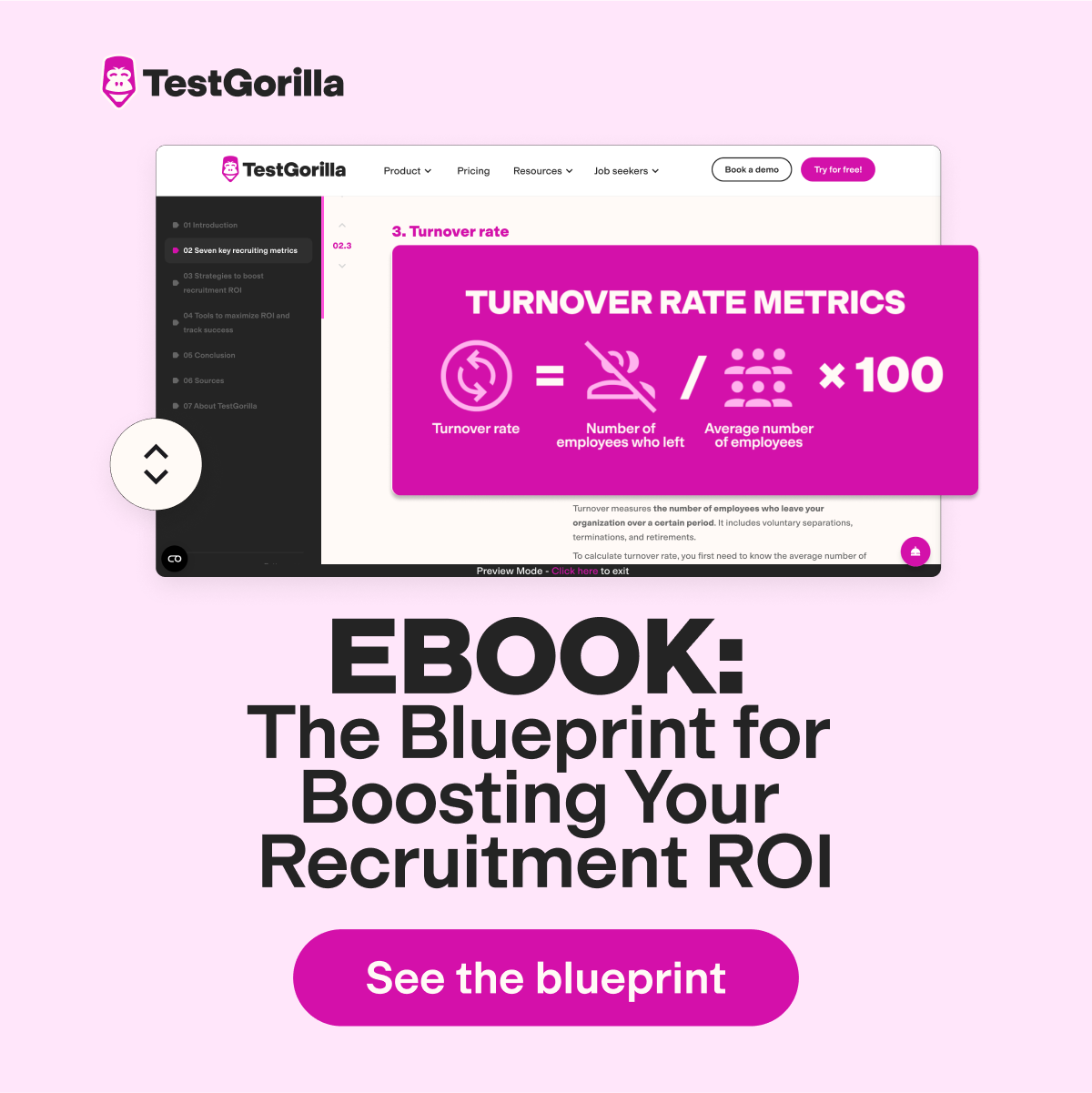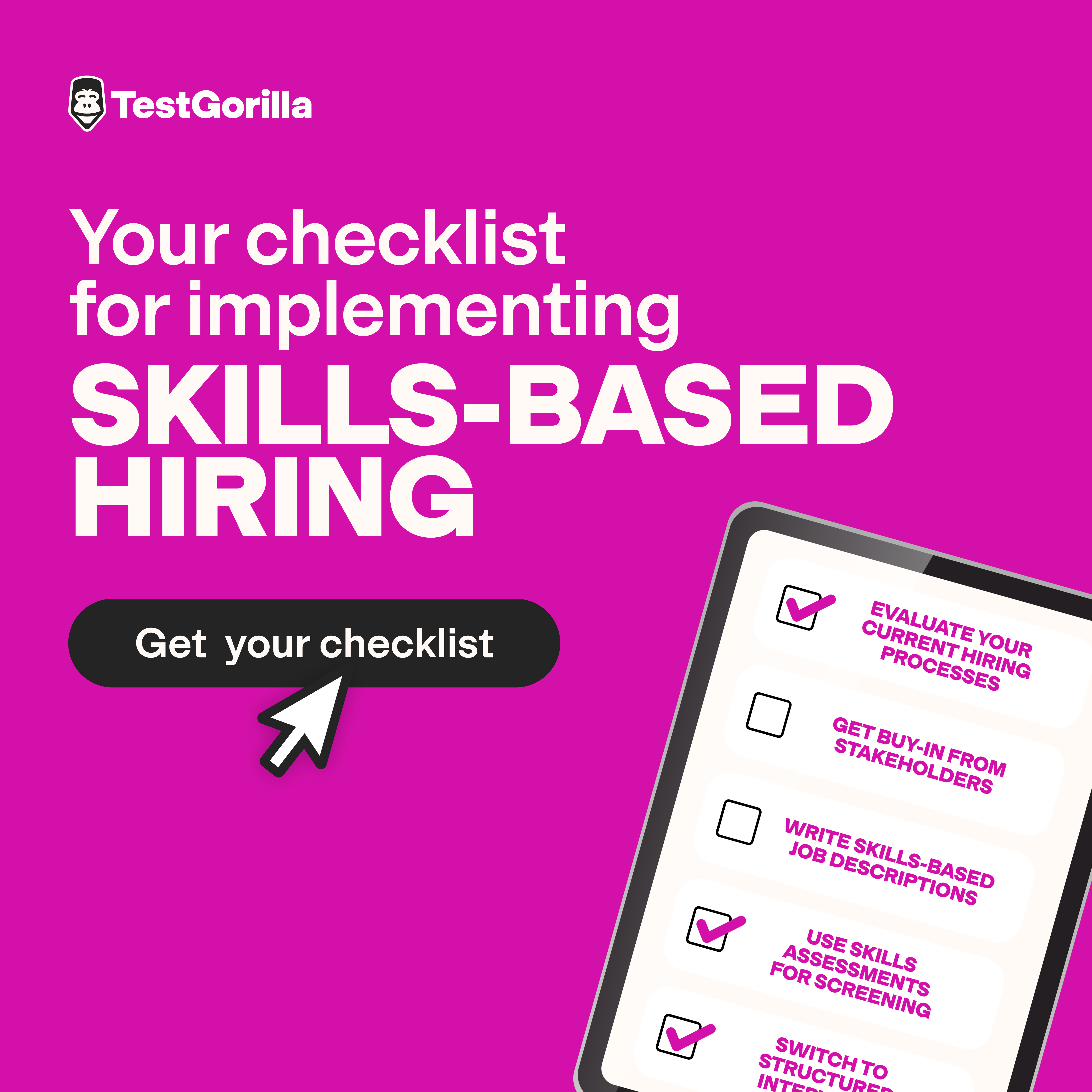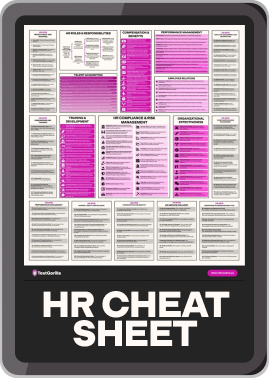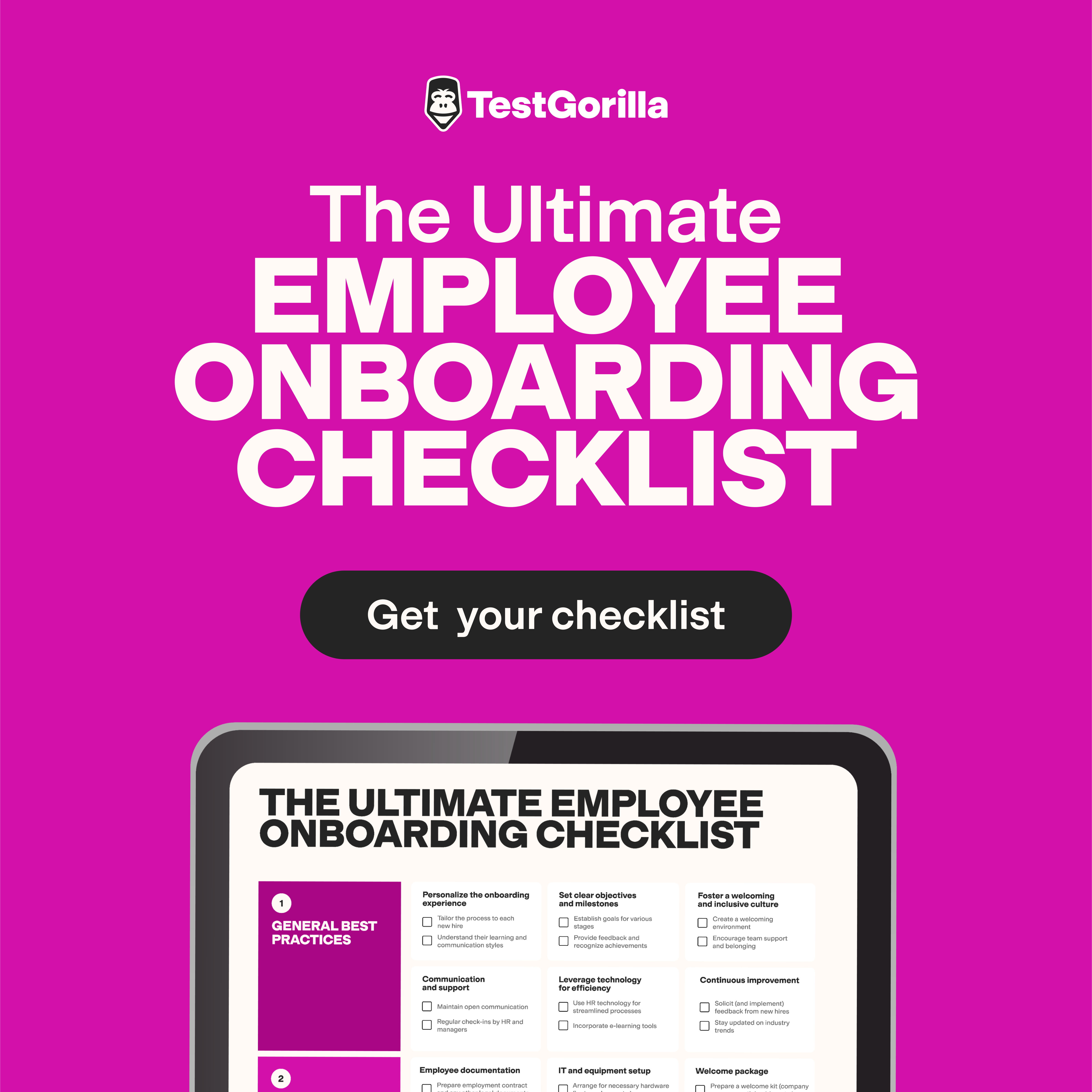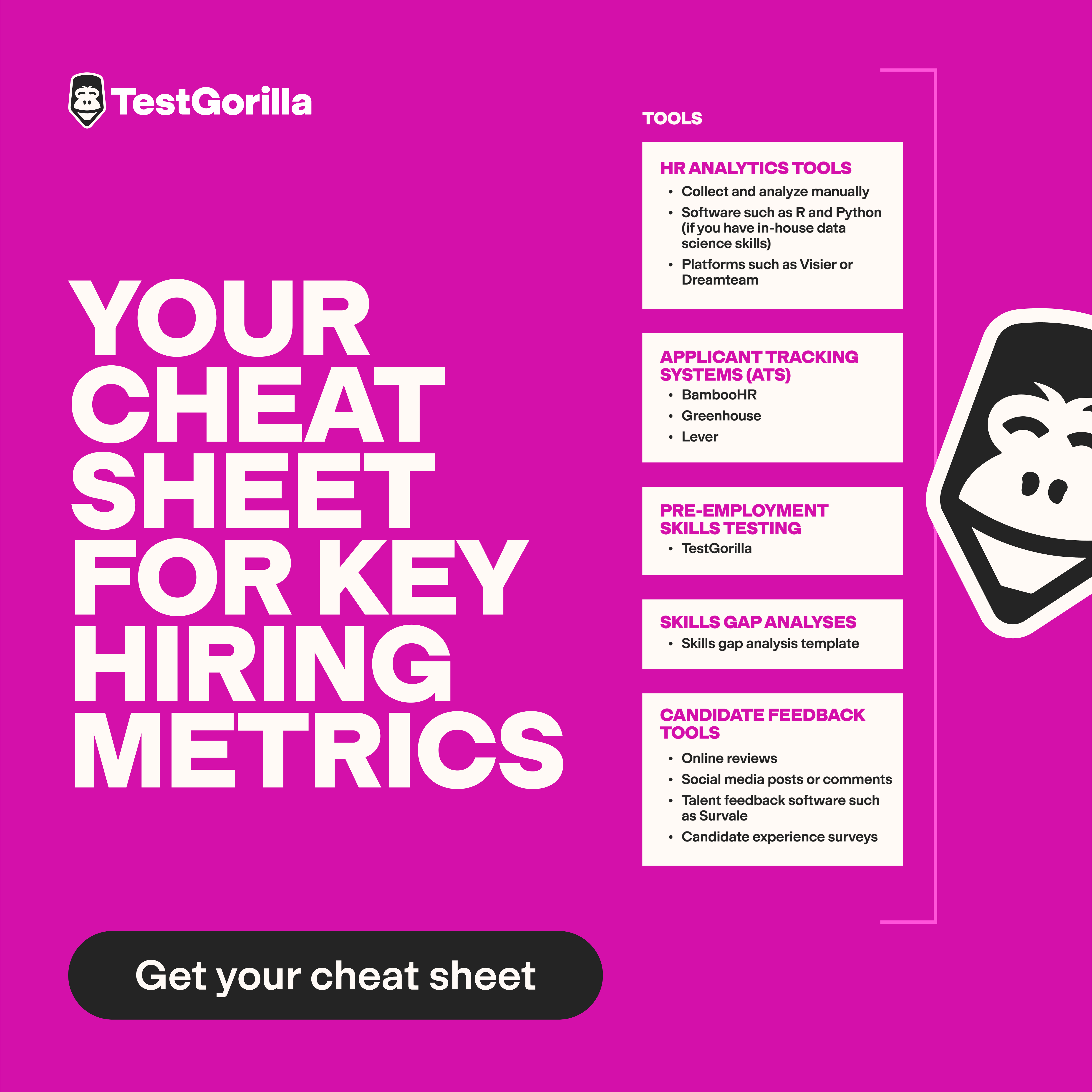Unleash employee potential with these personal professional development examples
Being an employee in a factory 50 years ago often meant that you worked that same job and had the same skills for 15 to 20 years. Because day-to-day activities didn’t change a lot over the years, most employees didn’t actively invest in developing new skills.
Today’s market is quite different. According to IBM, the average lifespan of a skill in the workplace is around five years.[1] This means that employees have to be self-motivated and invest in growing their skill sets if they want to stay relevant and employable in the job market.
In this guide, we’ll describe how to create professional development plans to help your employees keep their skills up to date and set them up for professional success.
On top of that, we will go over concrete examples of professional development plans that potential employers can use.
Table of contents
- What is a personal professional development plan?
- What should a professional development plan include?
- How to create professional personal development plans
- General examples of professional development plans
- Personal professional development examples with specific scenarios
- Help your team achieve their own success by setting professional development goals
What is a personal professional development plan?
A personal professional development plan (PPDP) is a structured and strategic approach to personal and professional growth.
Think of it as a customized roadmap that outlines an individual's personal development goals, aspirations, strengths, weaknesses, and the actions they need to take to enhance their skills, knowledge, and overall professional life.
The primary purpose of a PPDP is to empower employees to take control of their career growth and development by setting clear objectives and identifying the steps required to achieve them.
On an individual level, it demonstrates a growth mindset and a proactive approach to self-improvement and lifelong learning, which is increasingly important in today's rapidly evolving professional landscape.
Creating and following a personal professional development plan can provide numerous benefits, such as:
Increased job satisfaction
Improved job performance
Enhanced employability
Better preparedness for career advancement opportunities
What should a professional development plan include?
The key components typically found in a personal professional development plan are:
Self-assessment: This includes current skills, knowledge, strengths, weaknesses, values, interests, and career aspirations. This helps clarify your starting point and where you want to go.
Goal setting: Define SMART goals (more on this below) that align with your desired career path. These goals encompass skill development, knowledge acquisition, leadership growth, networking, and more.
Action plan: Break down each goal into smaller, actionable steps. Determine what resources you need, such as training, courses, workshops, mentorship, or books. Assign timelines to each step to track your progress.
Skill development: Identify the essential skills for your desired role or career path. This could include technical skills, soft skills, and industry-specific knowledge. Plan how you will acquire and refine these skills.
Learning opportunities: Research and identify relevant learning opportunities, such as workshops, online courses, seminars, conferences, and certifications. These activities can help you stay up-to-date with industry trends and expand your knowledge base.
Networking: Recognize the importance of networking in professional growth. Plan how you will connect with colleagues, mentors, peers, and industry professionals who can provide guidance, insights, and potential opportunities.
Mentorship: Consider finding a mentor who can offer guidance, share experiences, and provide valuable advice as you progress in your career. A mentor can provide a fresh perspective and help you navigate challenges more effectively.
Measurement and evaluation: Regularly assess your progress against your goals. Adjust your plan as needed based on new insights and changing circumstances. Celebrate your achievements and learn from any setbacks.
Adaptability: Be open to adjusting your personal professional development plan as your career evolves. Industries and job markets change, and your goals might need to be revised to stay relevant.
Long-term vision: Consider where you want to be in the next few years and how your current development efforts contribute to that vision. This helps you maintain a sense of purpose and direction.
The best insights on HR and recruitment, delivered to your inbox.
Biweekly updates. No spam. Unsubscribe any time.
How to create professional personal development plans
You shouldn’t create professional development plans on your own; it’s important to co-create them with your employees in one-on-one sessions. During those sessions, you should find out about the employee’s career goals, personal goals, interests, relevant skills, and professional ambitions.
After you pinpoint their interests and goals, you’ll need to create an easy-to-follow framework with objectives that the employee can accomplish.
It’s not about creating a complex goal-setting framework that looks good on paper, but rather building a plan that works in practice. In this case, simpler is better, which is why you should lead your employees through the SMART goal-setting framework.
How to use the SMART framework in setting professional development goals
Whether it's for professional growth or personal growth, having a simple framework to follow can help employees stay focused in achieving personal development goals. The SMART framework is one good example. It stands for:
Specific. The goal needs to be as specific and concrete as possible. The more specific it is, the easier it will be for the employee to understand exactly what they need to do to achieve it.
Measurable. If the goal isn’t measurable, the employee will have a hard time knowing when they’ve reached it. Becoming a better public speaker isn’t measurable, but holding 10 speeches in front of more than 100 people is a measurable action.
Achievable. It needs to be possible for the individual to accomplish the goal. This doesn’t necessarily mean that the employee must already have the skills needed to complete that goal, but they should be able to acquire the necessary skills and achieve the objective in a realistic time frame.
Relevant. The goal needs to be relevant for the employee for them to have the motivation to pursue it.
Time-bound. There needs to be a clear deadline for accomplishing the goal; otherwise, employees may procrastinate because they won’t feel any urgency to pursue it.
Guide your employees through this framework and make sure that they use it for every professional goal they want to achieve.
General examples of professional development plans
Here are general examples of personal professional development plans you can use for your employees:
1. Develop new skills in the workplace
It’s vital to talk about learning new workplace skills with your employees. You should nudge employees to become great in areas where they’re just good. Examples of these are data analysis skills, gaining more industry knowledge, or it could be learning a new programming language.
Keep in mind that it’s not about fixing employees’ weaknesses but rather capitalizing on their strengths and maximizing the skills they can gain from those strengths.
2. Improve soft skills
No matter how good an employee’s hard skills are, they won’t be able to advance their professional careers if they don’t have soft skills.
According to LinkedIn’s 2019 Global Talent Trends report, 92% of talent professionals believed that soft skills matter as much or more than hard skills. Therefore, it’s critical to discuss with your employees the soft skills they should learn for the workplace.
Some soft skills all employees should learn are:
listening skills
conflict resolution
understanding body language
how to communicate effectively
how to practice active listening
Hold one-on-one sessions with your employees to find out which soft skills are most interesting for them, and then encourage them to develop those skills through the SMART framework.
3. Master leadership skills and take on a leadership role
Nothing pushes employees to grow more than giving them new responsibilities in the workplace. Putting them in a role in which they are responsible for projects and other workers will push them to develop their leadership skills quickly.
They will face situations they haven’t encountered before, so they’ll need to grow fast to accomplish them successfully.
Be careful here – there’s a thin line between putting your employees in the learning and growth zone in leadership development, where they need to push themselves to solve problems and challenges, and forcing them into “the fire” completely unprepared. The learning zone will help them to become better leaders and take on more leadership responsibilities more confidently, whereas the “fire zone” will simply overwhelm them.
Recommended reading: 6 vital management skills all leaders need
4. Follow thought leaders in your industry
One great way employees can develop themselves professionally is by following thought leaders in their field. Reading books by industry leaders or listening to podcasts that host them will provide a lot of information employees can use for their development.
On top of that, employees will stay up to date with the most recent innovations in the industry, which will enable them to better prepare for them and take advantage of new opportunities.
5. Find a mentor
Nobody does everything alone, and even the best chief executive officers of today had great mentors along the way who helped them reach new heights. So one of the things you can do to help bolster your employees’ professional development is to help them find mentors and develop positive relationships with them.
A mentor could be an experienced employee, manager, or former executive who can grow and nurture employees to become better professionals.
Learn more: 11 key qualities of a good mentor
6. Attend workshops and seminars
Taking part in workshops and seminars can also be useful professional development goals. They provide not only training and information your employees can use in the workplace but also opportunities for building and nurturing professional relationships. This helps boost their professional network.
An employee who attends workshops by professional organizations in your industry may even find a mentor during one of these sessions.
7. Volunteer or take on a mentee
One last thing an employee can do for their professional development is to volunteer or take on a mentee. This isn’t just about them giving back to the community or assisting coworkers. It also pushes them to figure out the process of how they learned a specific skill and then transfer that knowledge to other professionals.
Taking on a mentee is an underrated ability that can be a major asset to employees’ future careers. It involves creating a process based on how the employee learned a specific skill and then teaching it to someone else. On top of that, they will be able to onboard new employees for their teams more easily since they will better understand how to integrate them into the organization.
Personal professional development examples with specific scenarios
Here are a few examples of personal professional development plans for different career scenarios:
Example 1: Early-career software developer
Goal: Enhance technical skills and contribute to open-source projects by implementing solutions. Improving networking skills is also a secondary (or nice-to-have) goal.
Action Steps:
Enroll in an advanced online course focused on a new programming language.
Commit to contributing to an open-source project on GitHub, aiming for at least three pull requests in the next six months.
Attend relevant local tech meetups to network and learn from experienced developers.
Complete certification in software development best practices.
Skill Development:
Improve proficiency in Python and learn JavaScript.
Strengthen version control skills with Git.
Gain experience in collaborating on projects with a remote team.
Learning Opportunities:
Enroll in "Advanced Python Programming" on an online learning platform.
Attend the local Python Developers Meetup for networking and skill-sharing.
Complete the "Git Fundamentals" course on a coding platform.
Networking:
Attend two tech conferences within the year.
Engage with other developers on social media platforms.
Join relevant online forums and communities for software developers.
Example 2: Mid-career marketing manager
Goal: Enhance leadership and management skills, improve work-life balance for a happy and fulfilling life, and foster open and honest communication in both professional and personal lives.
Action Steps:
Enroll in a comprehensive leadership and communication skills training program to refine management techniques.
Set clear boundaries for work and personal life, including designated "unplugged" time.
Initiate a bi-monthly team meeting focused on open and honest communication and feedback.
Skill Development:
Strengthen leadership and communication skills to manage and inspire team members effectively.
Enhance work-life balance strategies to prevent burnout and maintain well-being.
Develop conflict resolution skills to address challenges constructively.
Learning Opportunities:
Enroll in a leadership course specific to the industry.
Attend a workshop on work-life balance strategies and stress management.
Participate in a communication masterclass focused on active listening and effective feedback.
Networking:
Connect with fellow marketing managers and professionals at industry conferences.
Join a peer support group for mid-career professionals to share insights and experiences.
Participate in a local community group centered around maintaining work-life balance.
Integration of Personal and Professional Life:
Dedicate at least two evenings a week to spending quality time with family and engaging in personal hobbies.
Use calendar tools to block out "focus time" for important work tasks and "personal time" for self-care.
Prioritize family vacations and relaxation to recharge outside of work commitments.
Open and Honest Communication:
Implement a "Feedback Friday" practice where team members openly discuss successes and areas for improvement.
Foster an environment of trust by encouraging team members to voice concerns without fear of judgment.
Role-model transparent communication by sharing personal anecdotes and learnings with the team.
Physical Health and Well-being:
Commit to a regular exercise routine to improve physical health and reduce stress.
Incorporate short mindfulness sessions during work breaks to enhance mental clarity.
Promote a culture of wellness by organizing team wellness challenges and activities.
Example 3: Design intern
Goal: Develop emotional intelligence, enhance communication skills, and foster self-awareness during the internship to achieve personal and professional growth.
Action Steps:
Enroll in an emotional intelligence workshop to understand and manage emotions effectively.
Set a personal development goal to actively seek feedback from peers and mentors.
Incorporate regular reading and journaling to enhance self-awareness.
Skill Development:
Strengthen emotional intelligence to navigate workplace dynamics and collaborate effectively.
Improve communication skills to convey design ideas clearly and contribute meaningfully.
Develop the ability to self-assess strengths and areas for improvement.
Learning Opportunities:
Attend a seminar on emotional intelligence in the workplace to gain expert insights.
Study body language techniques to better observe nonverbal cues during presentations.
Explore books and articles on active listening and its role in successful communication.
Networking and Competitive Advantage:
Engage with fellow interns and design professionals at networking events and workshops.
Leverage networking to gain insights into industry trends and gain a competitive advantage.
Initiate conversations about emotional intelligence and self-awareness to stand out as a thoughtful contributor.
Improving Communication Skills:
Practice improving communication skills through regular mock presentations.
Attend public speaking workshops to enhance confidence and poise while presenting ideas.
Study the speaker's body language to understand how to engage and captivate an audience.
Improve written communication skills by writing one blog post for the company blog every month.
Positive Outcomes and Self-Awareness:
Regularly review and update a to-do list to track progress on design projects and personal growth objectives.
Reflect on negative aspects of past experiences to identify areas for improvement.
Embrace feedback as an opportunity to learn and grow, fostering a positive attitude towards challenges.
Integration of Personal and Professional Growth:
Set aside time each week for personal reflection and goal-setting to align with professional aspirations.
Identify personal hobbies or interests that align with enhancing emotional intelligence and self-awareness.
Seek ways to transfer positive outcomes from personal development efforts into design projects.
Help your team achieve their own success by setting professional development goals
The more developed your employees are, the more successful your organization will be. The first thing you should do when helping your employees create professional development goals is to find out their baseline skills.
To figure out their “point A,” you should assess the skills of your employees to determine whether they have gaps in their skill sets.
Don’t worry – you don’t have to create your own skills assessments from scratch. We have more than 300 scientifically created skills tests divided into seven categories in our test library.
Sign up for a free demo to find out more about how we can help you assess your employees’ skills. You can also get started right away with a free account.
Source:
Malik, Sonia. (December 7, 2020). “Skills Transformation For The 2021 Workplace”. Retrieved November 21, 2022. https://www.ibm.com/blogs/ibm-training/skills-transformation-2021-workplace/
You've scrolled this far
Why not try TestGorilla for free, and see what happens when you put skills first.

